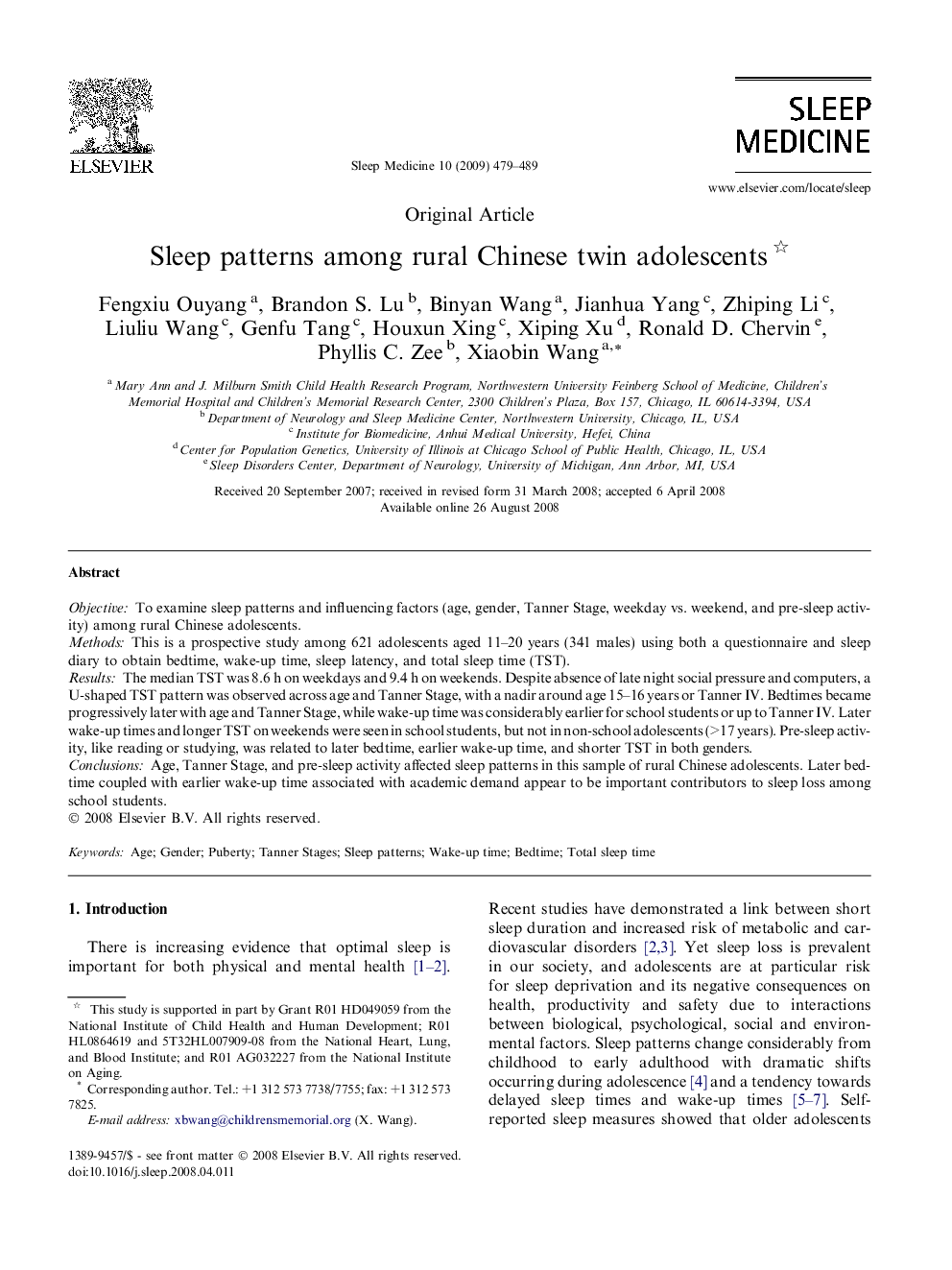| Article ID | Journal | Published Year | Pages | File Type |
|---|---|---|---|---|
| 3177759 | Sleep Medicine | 2009 | 11 Pages |
ObjectiveTo examine sleep patterns and influencing factors (age, gender, Tanner Stage, weekday vs. weekend, and pre-sleep activity) among rural Chinese adolescents.MethodsThis is a prospective study among 621 adolescents aged 11–20 years (341 males) using both a questionnaire and sleep diary to obtain bedtime, wake-up time, sleep latency, and total sleep time (TST).ResultsThe median TST was 8.6 h on weekdays and 9.4 h on weekends. Despite absence of late night social pressure and computers, a U-shaped TST pattern was observed across age and Tanner Stage, with a nadir around age 15–16 years or Tanner IV. Bedtimes became progressively later with age and Tanner Stage, while wake-up time was considerably earlier for school students or up to Tanner IV. Later wake-up times and longer TST on weekends were seen in school students, but not in non-school adolescents (>17 years). Pre-sleep activity, like reading or studying, was related to later bedtime, earlier wake-up time, and shorter TST in both genders.ConclusionsAge, Tanner Stage, and pre-sleep activity affected sleep patterns in this sample of rural Chinese adolescents. Later bedtime coupled with earlier wake-up time associated with academic demand appear to be important contributors to sleep loss among school students.
